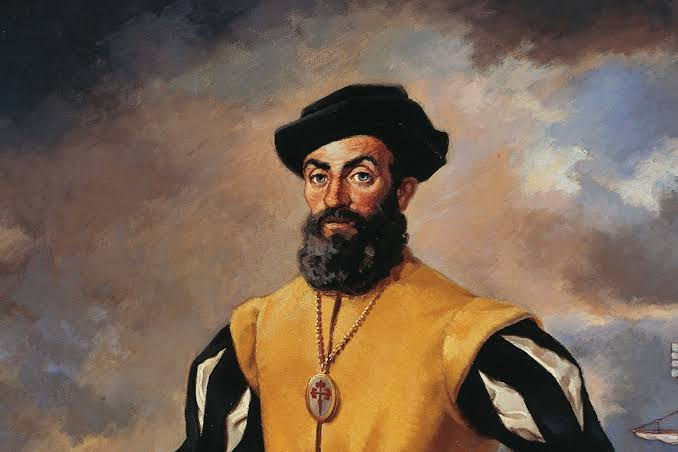Rich History and Culture of Boracay
- JOJO
- Jul 26, 2024
- 4 min read
Discover the Rich History and Culture of Boracay
Standing on Boracay’s White Beach in the early 1970s, you'd have experienced the same fine white sand and stunning sea views as you do today. What's different now is the vibrant world that inhabits the space behind the beach.
For centuries, Boracay was virtually a secret—a hidden gem in the Western Visayas visited only by the occasional adventurous explorer. As with most of the Philippines, Boracay was hard to reach, with no regular planes, buses, or even boats. But all that has changed now. Let's take a journey through Boracay's history, from its humble beginnings to the popular travel destination it is today.


1521 – 1960: Before Tourism
When the Spanish arrived in the Philippines under Ferdinand Magellan in 1521, Boracay was inhabited by about 100 people who farmed rice, fished, and raised goats. These original indigenous residents are known locally as the Ati tribe.
Through the 1940s and 50s, the people of Boracay (Boracaynons) relied mainly on fishing and coconut farming for their livelihoods. They also traded with businesses on the neighboring island of Panay. However, overfishing using cyanide seriously damaged the nearby reefs, and the cost of farming had become too high. So, in the 1960s, Boracay switched industry and started trading puka shells, which were then found in abundance on its aptly named Puka Beach.


The 70s: Boracay’s First Glimpse on the World Stage
In 1970, two movies featuring Boracay Island were released: Nam’s Angels (also known in the United States as The Losers) and Too Late The Hero. Suddenly, Boracay’s beauty was displayed internationally for all to see.

A few years later, in 1978, German writer Jens Peter described the island as “paradise on earth” in his book about the Philippines, further increasing awareness of the island. Due to this sudden international attention, the island started to attract some tourism. Visitor counts were still modest, and at this point, there were only two guesthouses on the entire island: Aguirre’s Beach House and White Beach Resthouse, which charged 5 and 10 pesos a night respectively.


The 80s: Backpackers & Boat Stations
From the early 80s onwards, the island saw a steady increase in tourism. At first, mostly backpackers looking for a budget getaway came to the island. Cheap local nipa-style accommodation and local food were the order of the day.
During most of the 80s, boat transport to and from Boracay was arranged by flagging down and chartering passing boats. As arrivals increased steadily, it became necessary to control where people came and went, so three boat stations were set up along the four-kilometer stretch of White Beach in 1988. They became the designated drop-off and pick-up points for guests coming and going. Today, these stations aren’t used as boat stations anymore, but their names are still used to refer to different neighborhoods along White Beach.


The 90s: Mainstream Resorts Arrive
Recognizing a great opportunity, investors from Philippine cities like Iloilo and Manila began building bigger and more luxurious Boracay hotels, with better facilities for the well-heeled. The first swimming pools and high-end restaurants sprung up. Seeing things could get messy without a master plan, a US-based consultant was hired to put together a long-term plan for the island’s future, and a task force was appointed to see it through.
In 1991, however, authority was handed over to the local government, which seemingly misplaced or chose to ignore the plan, and an opportunistic free market took over. Later in the 1990s, international hotel chains came to the island, with Shangri-La Resort & spa being the first. By 1997, the original sewage system was struggling to cope with the sudden influx of tourists, causing an outbreak of bacteria that saw tourism drop by more than half. The addition of a more robust water treatment system quickly remedied this.

2000 – 2017: Explosive Growth & Sustainability Problems
Throughout this period, Boracay regularly received travel awards, with the most prestigious being "World’s Best Island," awarded by Travel + Leisure in 2012. As a result, tourism grew explosively, but the infrastructure did not keep up. In 2015, serious sustainability issues became prevalent, such as stinky water seeping onto the streets in various local areas.
In 2017, 90 percent of Boracay’s roads were flooded during tropical storm Urduja, highlighting the inadequacies of the drainage system.
2018: Boracay Closed for Rehab & Re-Opened
On April 4, 2018, Philippine president Rodrigo Duterte announced Boracay would be closed for up to six months, starting on April 26. The island was closed between April and October 2018 to allow for rehabilitation. This included upgrading drainage and electricity systems, building safer sidewalks, and better quality road surfaces. While this upheaval was traumatic for some residents, most people agree it was the right thing to do. The long-term benefits far outweigh the short-term upset, and in the end, everyone is set to enjoy a more sustainable and eco-friendly Boracay Island.


2019 and Beyond
While Boracay’s main rehabilitation effort during the closure has already passed, further rehabilitation is ongoing. It was scheduled to be completed in December 2019, though that may have been delayed. The Philippine government has considered closing the island for another month to speed up progress, but no final decision has been made.
A sustainable and eco-friendly Boracay will be an ongoing effort. When done well, it can serve as an example of how to turn a tourism destination around—an example that other Philippine travel destinations can follow.
Boracay’s rich history and culture, combined with its breathtaking natural beauty, make it a unique destination. Whether you're a history buff, a culture enthusiast, or simply someone looking to relax on a beautiful beach, Boracay has something for everyone.
So, pack your bags and get ready to explore the wonders of Boracay!





.png)

.png)

.png)


.png)
Wow, this is a lot of information. Thank you 😊